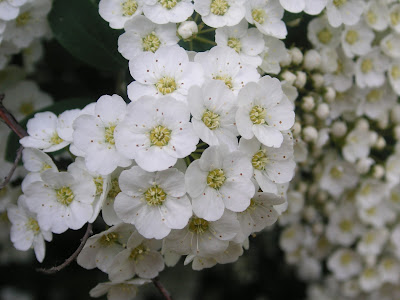Anyways, on to Kate Sessions.
A young Kate Sessions
"Botanically speaking, I would call Miss Sessions a perennial, evergreen, and everblooming"
-George Marston, at a 1935 garden dedication in her honor
Kate Sessions: I figured I'd also bring things back to the United States with this one as well. Born Katherine Olivia Sessions, she was born on Nob Hill in San Francisco on November 8, 1857. After graduating she spent a few months touring Hawaii and then did a brief stint in business college and enrolled at University of Berkeley in 1877. Her essay for graduation was entitled "The Natural Sciences as a Field for Women's Labor". Clearly an early pioneer and adopter of urging women into science. Good stuff. Keep in mind women couldn't even vote at this time. Crazy right? She did a bit of teaching after this and eventually wound up in Sand Diego where her horticultural spirit truly took hold. In 1885 she purchased a nursery, was soon owner of a flower shop, and nurseries in Coronado, Pacific Beach, and Mission Hills. I'm definitely hunting down Mission Hills Nursery which she founded in 1910. It's still in operation! Can't wait to visit!
Ever hear of Balboa Park? Well, she is largely responsible for a lot of the amazing trees growing there. In 1892 she leased 30 acres of the land for growing land and agreed to plant 100 trees a year in the park which was pretty empty at the time. In 1902 she was a big part of the formation of the park Improvement Committee with George Marson and Mary B. Coulston. You can now visit and see cypress, pine, oak, pepper trees and eucalyptus trees that she brought in from all over the world and grew from seed. Reading about her really gives me some focus and inspiration for my job to be sure.
She also co-founded the San Diego Floral Association which is the oldest garden club in Southern California. She taught classes and wrote articles for California Garden the associations publication. By 1915 she was the supervisor of agriculture and landscaper for the cities schools and taught botany to schoolchildren.
Kate died on March 24th 1940, having lived a full life of service and contribution. She never had any children and once wrote her longtime friend (and also amazing botanist) Alice Eastwood:
"Our friendship developed through flowers...our children, which I am growing and you are naming."
How beautiful is that? The feels.
Older Kate: I see a look of gentle resolve with a slight bemusement.
Plants: O.k. where to start, jeez. She introduced a LOT of material and went on collection trips across southern California as well as Europe. It had to have been a golden age for horticulture at the time, especially given San Diego's mild climate. She introduced many California natives (perhaps Calochortus...but I'll have to look). One of the most famous plants she is credited with introducing is Jacaranda mimosifolia or blue jacaranda, a native of South America. If you've never seen this tree...prepare for a treat. It's a show stopper.
Jacaranda mimosifolia - Public Domain
Despite the nod to Mimosa like leaves (mimosifolia), it is a member of the Bignoniaceae family and not Fabaceae. Invasive in some parts of the world, it is listed as vulnerable in it's native habitat. How bout those flower though! Absolutely stunning.
Honors: Well deserved, to be sure. In 1935 she was named the "Mother of Balboa Park" and you can find a statue of her in the park today. Apparently it is the only full sculpture of a non-fictional woman in San Diego. In 1939 she became the first woman to receive the prestigious Frank N Meyer medal of the American Genetic Association. In 2006 she was inducted into the San Diego County Women's Hall of Fame under the title of Trailblazer. A 2013 a children's picture book was released. It is called The Tree Lady: The True Story of How One Tree-Loving Woman Changed a City Forever, and it tells the story of her life. Great for the kids. Please pass down some good legacy.




















